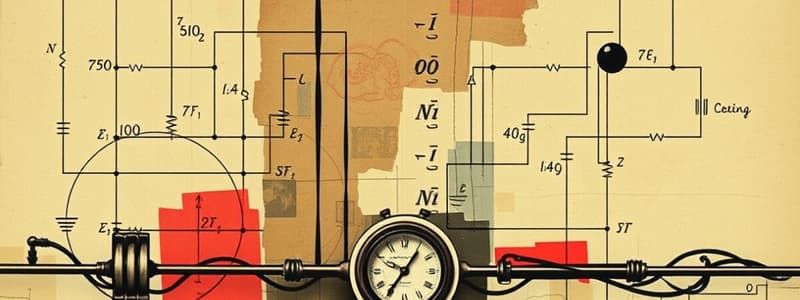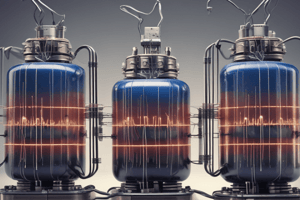Podcast
Questions and Answers
What is the first step in applying Kirchhoff's Current Law?
What is the first step in applying Kirchhoff's Current Law?
- Check the total current ITH
- Make the connection using a circuit diagram (correct)
- Verify the current at each resistor I1, I2, I3
- Connect resistors in series
Which configuration of resistors is used in Kirchhoff's Current Law?
Which configuration of resistors is used in Kirchhoff's Current Law?
- In series
- In parallel (correct)
- In a combination of series and parallel
- None of the above
What must be verified to ensure Kirchhoff's Current Law holds true?
What must be verified to ensure Kirchhoff's Current Law holds true?
- The total voltage across the resistors
- The resistance values of the circuit
- The total current ITH equals the sum of individual currents I1, I2, I3 (correct)
- The power dissipated in each resistor
What is the purpose of checking the current at each resistor (I1, I2, I3)?
What is the purpose of checking the current at each resistor (I1, I2, I3)?
Which of the following is NOT a step in applying Kirchhoff's Current Law?
Which of the following is NOT a step in applying Kirchhoff's Current Law?
Flashcards
First step in applying Kirchhoff's Current Law
First step in applying Kirchhoff's Current Law
Drawing a circuit diagram that represents the connection of resistors.
Resistor configuration in Kirchhoff's Current Law
Resistor configuration in Kirchhoff's Current Law
Resistors connected in parallel, where the current splits through each resistor.
Verifying Kirchhoff's Current Law
Verifying Kirchhoff's Current Law
Ensuring that the total current is equal to the sum of individual currents in a parallel circuit.
Purpose of checking individual currents
Purpose of checking individual currents
Signup and view all the flashcards
NOT a step in applying Kirchhoff's Current Law
NOT a step in applying Kirchhoff's Current Law
Signup and view all the flashcards
Study Notes
Kirchhoff's Current Law (KCL)
- KCL states that the total current entering a junction equals the total current leaving it, emphasizing conservation of charge.
- When creating a circuit diagram, ensure clear labeling of all connections and components, including resistors and current sources.
- Connect all resistors in parallel for this experiment, as this configuration allows for multiple pathways for current flow, facilitating KCL application.
- Measure the total current (ITH) in the circuit to assess current distribution across parallel branches.
- Measure current at each resistor (I1, I2, I3) individually using an ammeter connected in series with each resistor.
- Validate KCL by confirming that the total current entering the junction (ITH) equals the sum of the currents through each resistor (I1 + I2 + I3), underscoring the law's principle.
Studying That Suits You
Use AI to generate personalized quizzes and flashcards to suit your learning preferences.




